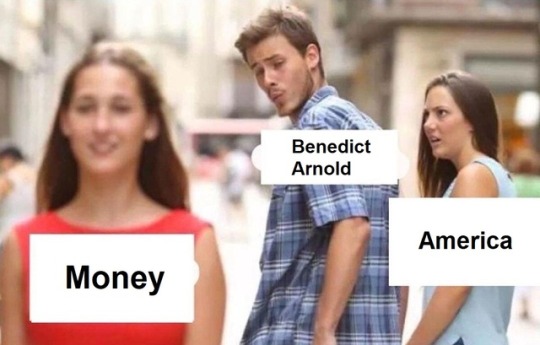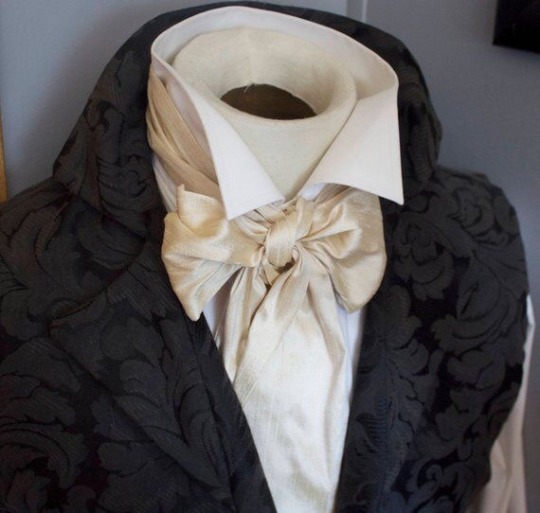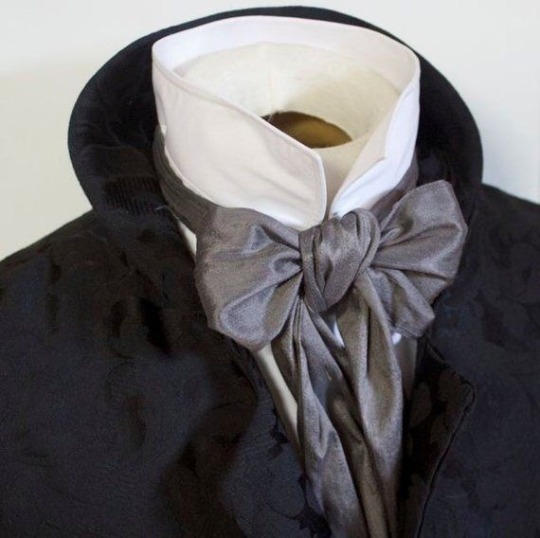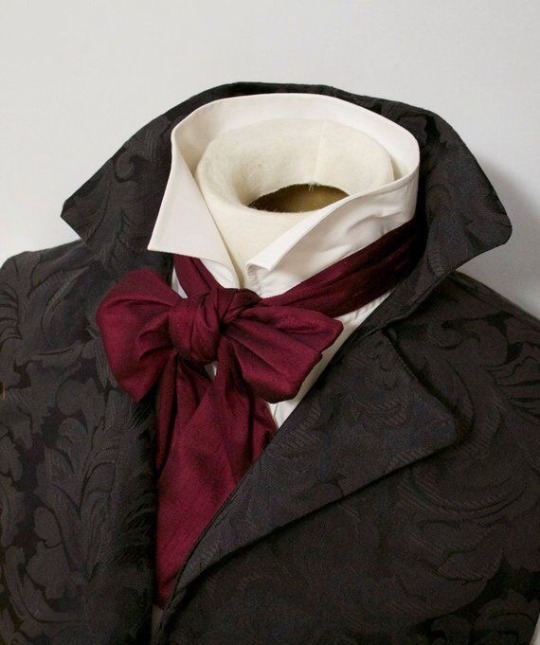Text
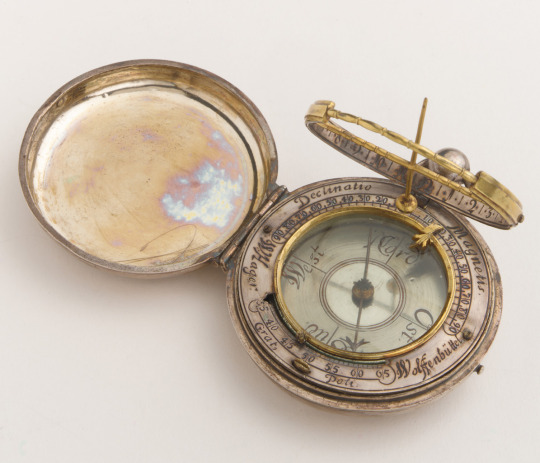
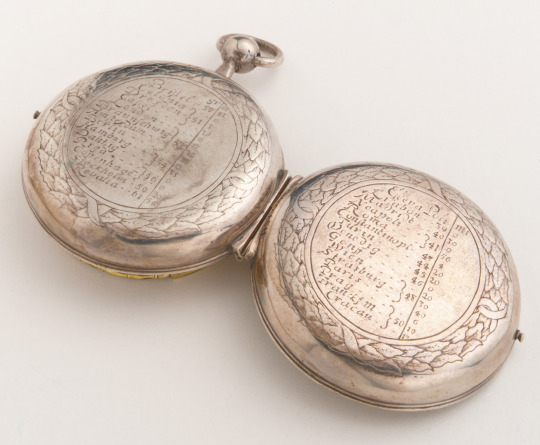
Compass with sundial in shape of a pocket watch, perfect to carry it in the coat and to check the course from time to time, by Wolfgang Hager 1650-1700, Germany
28K notes
·
View notes
Text
Fantasy Wardrobe: Gowns
Skirts, ball gowns and chitons. Fantasy fashion is seen more often on women than the men so we focus on their clothes more. Sorry for this bible of a post.
Under the gown

Stop that dirty mind. These are the structures that hold out the gown to keep it the shape desired.
Farthingale/verdugado: were a series of hoops stitched into a sheath of material. This was worn under the gown in order to plump it out.
Pannier: Unlike to the farthingale, these were set at the hips rather than all around the body. These were popular in the 17th and 18th centuries. They extended the width of the skirt keeping the front and back panels flat.
Crinoline: This is a structured petticoat made to plump out a skirt of a gown popular in Victorian times. They were popular at the mid-19th century.
Petticoat: This is an underskirt worn under a skirt or a dress. Modern ones are made of layer after layer of tulle or netting.
Chemise/shift: A long underdress made of light material worn under the corset, kirtle and gown.
Top of the gown
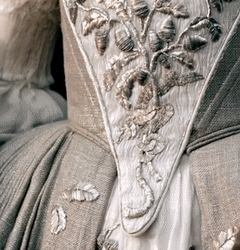
This portion of the gown covers from the shoulders to the hips/waist.
Bodice: This part is the where the gown covers area from the neck to the waist.
Halter Neck: The halter neck’s straps go up the shoulders and are fastened at the neck, exposing the shoulders and having a plunging neckline.
Plunging Neck: The neckline makes a V from the neck/shoulders in the direction of the navel.
Empire Line: This style was popular in the Napoleonic courts. The bodice ends below the bust line and here the skirt begins flowing.
Boat neckline: This neckline runs from one shoulder to the other like Meghan Markle’s wedding gown.
Sweetheart: This makes a loveheart shape over the bust.
Scooped: a round neckline
Square: a square neckline
Sheer: When a see-through piece of material is sewn over the top of the gown.
Sleeves

The sleeves of the gown are just as important as the rest of it. Again variations lead to a wider sense of imagination.
Cold Shoulder: The sleeves begins at the top of the shoulder while the rest drapes behind, allowing the arm to be seen through it. Also called Angel sleeve.
Batwing sleeve: This sleeve has a deeper area for the arm and tapers thinner toward the wrist. Also called a magyar.
Bell sleeve: The sleeve runs down the shoulder and flares out from the elbow
Bishop sleeve : This sleeve is loose from the arm but tight at the cuff.
Cap sleeve: This only covers the top of the shoulder.
Fitted point sleeve: The sleeve tapers tp the back of the back in a point.
Gigotor: This sleeve is wide at the upper part of the arm but narrows at the elbow and wrist.
Hanging sleeve: This sleeve that slits at the side or front or the elbow, allowing the arm to peak out. Popular in mediaeval times.
Juliet sleeve : This sleeve has a puff at the top and runs down the arm or leaves it bare. See Snow White.
Lantern sleeve: The top of the sleeve runs straight and then puffs out between wrist and elbow
Poet sleeve: This long sleeve is fitted tight at the shoulder to elbow flares at the elbow and wrist.
Wizard’s sleeve: This sleeve runs from shoulder to wrist opening there and draping toward the floor with points.
Skirts
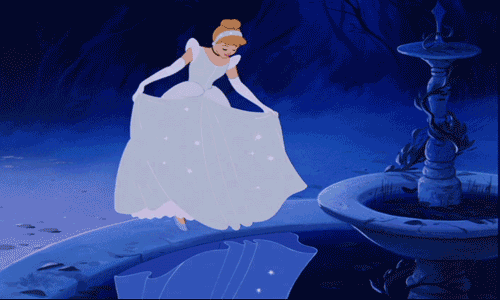
The shapes of the skirt vary. Try different shapes with your world to give a feeling of variety and depth.
A-line: This skirt flares out from the bodice with a gentle slope almost like the letter A.
Ballgown: This skirt stretches from the bodice in a wide shape. Think of the massive gowns on Big Fat Gypsy Wedding.
Bell Jar: Similar to the ballgown only the hem slightly goes in making it look like a bell.
Drop Waist Silhouette: This skirt begins below the hips from a loose seam. Most popular in 1920s.
Mermaid Silhouette: The gown is tight and fitting from the neck down to the knees of shins where is flares out like a fish’s tale.
Trumpet Silhouette: The skirt flares out from the mid thigh region.
High-Low skirt: the skirt is short at the front and long in the back. The mullet of gowns if you will.
Train: This is a sweep of material that trails behind the lady as she walks.
Examples of interesting historical gowns.

Sack-back gown or robe à la française: Popular in the 18th century. This style has the fabric gathered and streaming from the shoulders like a cape. The gown is open at the front to show the stomacher and petticoat. Here panniers will be worn, the wider the richer the lady. This gown often had ¾ length sleeves.
Robe à la polonaise: This is a gown with a skirt that is cutaway, draped and ruffled at the overskirt. It can also be fitted.
Robe à l'anglaise: Similar to the francaise, the back of the gown was pleated into a cape like train. The gown was open in front to show the petticoat and the sleeves reached the elbows.
Tudor Style: This gown has a square neckline which may or may not include a sheer. The sleeves an be fitted to elbow and then billow out, lined with fur or are fitted at the elbow and wrist, showing the chemise underneath.
Chiton: This dress is often seen in Roman or Greek art. The Doric version was made by draping material over the body and fastened at the shoulder by clasps The Ionic chiton version was draped about the body and pinned at the waist.
Civil War Gown: These gowns featured drop shoulder sleeves, had low necklines, and ridiculously voluminous skirts. All this had to have petticoats and crinoline to keep the shape.
Tea gown: These gowns were seen in 19th century clothes. They had little form or structure and were often made of light fabrics.
Russian court dress: This gown consisted of robes worn over a tablier, with a boat neckline and cold shoulder sleeves.
7K notes
·
View notes
Text
it’s hilarious to me when people call historical fashions that men hated oppressive
like in BuzzFeed’s Women Wear Hoop Skirts For A Day While Being Exaggeratedly Bad At Doing Everything In Them video, one woman comments that she’s being “oppressed by the patriarchy.” if you’ve read anything Victorian man ever said about hoop skirts, you know that’s pretty much the exact opposite of the truth
thing is, hoop skirts evolved as liberating garment for women. before them, to achieve roughly conical skirt fullness, they had to wear many layers of petticoats (some stiffened with horsehair braid or other kinds of cord). the cage crinoline made their outfits instantly lighter and easier to move in
it also enabled skirts to get waaaaay bigger. and, as you see in the late 1860s, 1870s, and mid-late 1880s, to take on even less natural shapes. we jokingly call bustles fake butts, but trust me- nobody saw them that way. it was just skirts doing weird, exciting Skirt Things that women had tons of fun with
men, obviously, loathed the whole affair
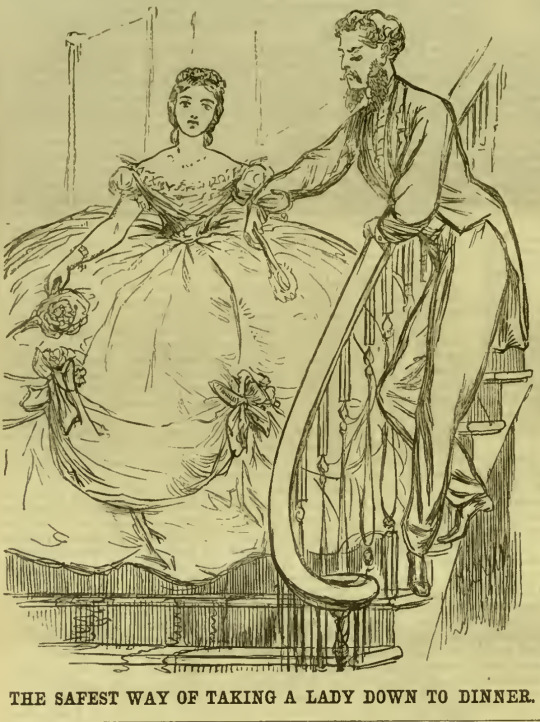
(1864)

(1850s. gods, if only crinolines were huge enough to keep men from getting too close)

(no date given, but also, this is 100% impossible)
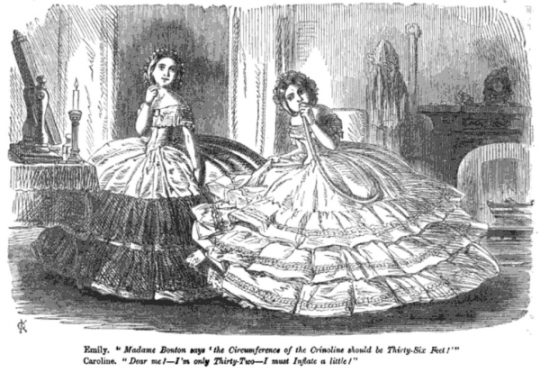
(also undated, but the ruffles make me think 1850s)
it was also something that women of all social classes- maids and society ladies, enslaved women and free women of color -all wore at one point or another. interesting bit of unexpected equalization there
and when bustles came in, guess what? men hated those, too
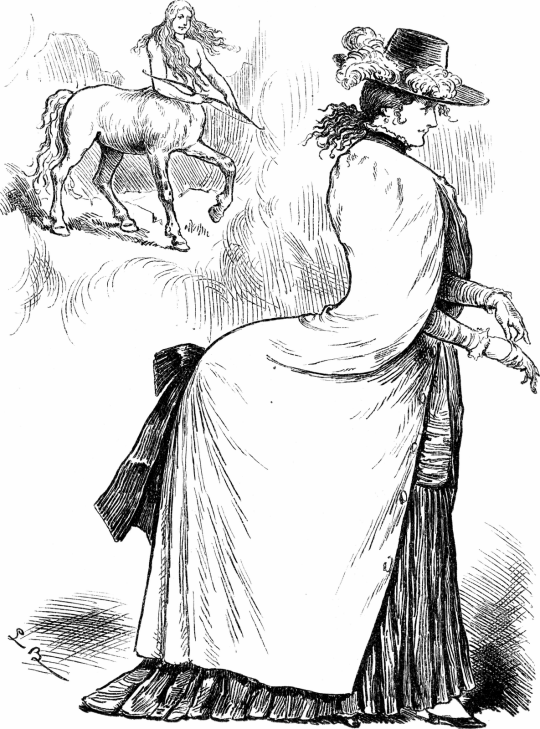
(1880s)
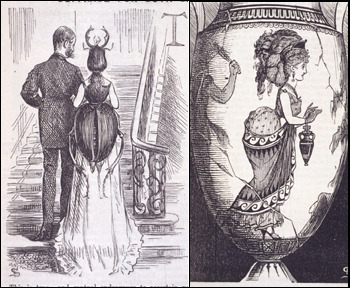
(probably also 1880s? the ladies are being compared to beetles and snails. in case that was unclear)
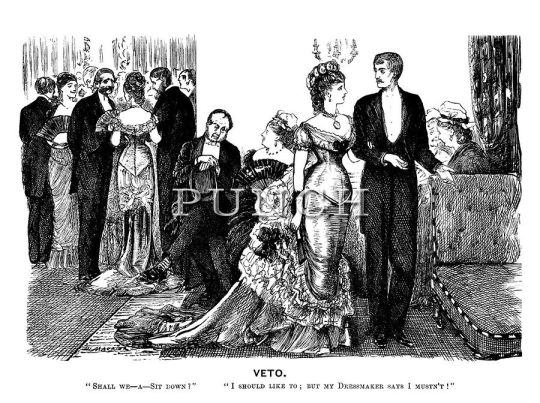
(1870s, I think? the bustle itself looks early 1870s but the tight fit of the actual gown looks later)
hoops and bustles weren’t tools of the patriarchy. they were items 1 and 2 on the 19th century’s “Fashion Trends Women Love That Men Hate” lists, with bonus built-in personal space enforcement
138K notes
·
View notes
Photo
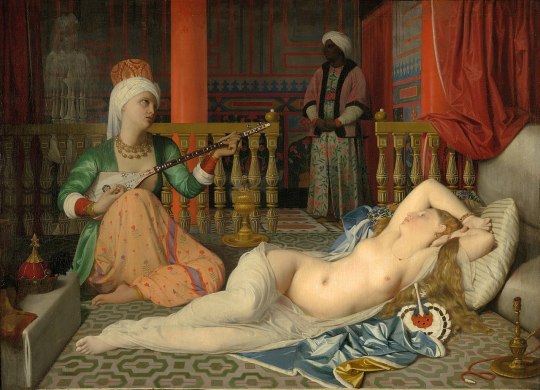
Odalisque with Slave, 1839, by Jean Auguste Dominique Ingres (1780-1867)
Why Victorians Went Crazy for Orientalism
During the period of feverish obsession with Orientalism, European artists and art lovers looked towards what they dubbed the “East” - aka the “Orient.” The Victorians weren’t overly specific, as this region actually spans many distinct territories and cultures over the Middle East, North Africa, and West Asia. They all did have one sure thing in common however, their “otherness.” They were decidedly different from European culture and while the obsession of the Orient has stretched quite far back in history (and I mean centuries before), we’re going to focus on how and why the Victorians in particular went crazy for it.
The idea of the “Orient” often sets the scene in one’s mind as slave markets, snake charmers, women either dressed in too much clothing or none at all, the hustle of markets and harems, as ‘Arabian Nights’ from Disney’s Aladdin plays in the background. These are just some of the stereotypes which continue to dominate much of the region(s) rich cultures and histories. Provocative, erotic, and exotic.
Power and Obsession
Society at this time held an appreciation of the complex architecture, but often little else, interested only in what the artists could portray as consumable to an audience - whether it was an accurate representation or not.
They largely pushed the view of East civilizations “otherness” through unrealistic portrayals of its people. Clearly all Arab and Turkish men were snake charmers or slave traders, and all women were poor sexy slaves or… sexy slaves with slightly more luxurious lifestyles - “sexy slave babes” as Lindsay Ellis playfully coins in her video essay ‘The Most Whitewashed Character In Literary History.’ It largely represented these cultures stereotypes or fantasies from the Victorians outside perspectives.
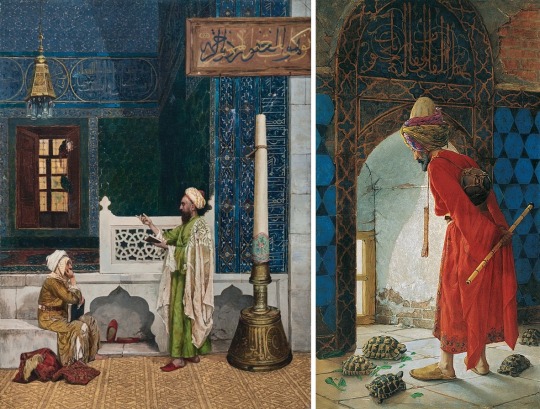
For example, look at the amazing care Osman Hamdi Bey, an artist actually born within the Ottoman Empire, took in portraying the architecture and lettering within ‘Reading the Quran,’ and ‘The Tortoise Trainer.’

While Jean-Léon Gérôme’s painting ‘The Snake Charmer’ isn’t as grounded in reality.
These portrayals, which didn’t just occur in visual art but also frequently in literature and the World’s Fair, created a narrative in which the Western control of the East made them civilized and justifying that good ol’ colonial spirit.
Breaking the Nude Rules
Nudity was a big thing for the Victorians. Today we regard them as shrewds scared of showing their ankles, but they went nuts for scandal and drama. Traditionally in Victorian art, nudity had to hold a purpose in order to be deemed acceptable. This included requirements such as depicting mythological or allegorical figures. Then entered ‘Orientalism’ and with it an exception to the rule, where they could view as many naked sexy slave babes that they wanted! Orientalism was an exception to the Nude Rules within Victorian society, and Orientalist artists milked it. Depictions of harems within Victorian art could vary greatly, from some showing it as a more domestic space for women, to others dialed up the exotic and erotic to 100.
When seeing how the Harem was depicted in art by men in particular isn’t all that surprising, as it was the unrealistic portrayal of what was essentially the equivalent to an exotic form of an all-girls sleepover, equipped with nothing but pillows. In short, it was pure fantasy. This is largely due to the fact that men weren’t actually allowed in harems. Going back to Ellis’ video essay, these 19th century European men of course struggled with the “why can I not have the thing?” mentality, and so were naturally inclined to go off nothing but their sexy, sexy fantasies.
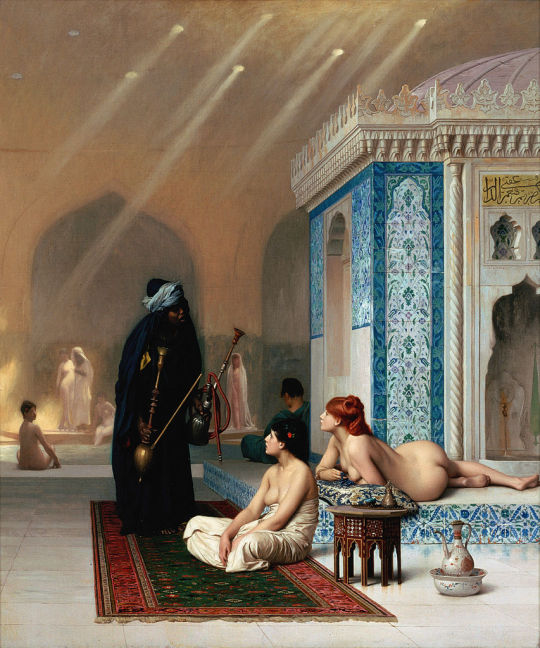
For example, let us view the harem through the male gaze with Jean-Léon Gérôme’s ‘Pool in a Harem,’ painted in the 1870s.

In comparison is Henriette Browne’s 1860 painting titled ‘A Visit: Harem Interior, Constantinople.’
Beautiful but Problematic
Orientalism, since the publishing of the famous ‘Orientalism’ by Edward Said, has been dubbed inherently racist by many. Many depictions were for sure inspired by colonialism and the want to patronising-ly differentiate civilizations. Adam Shatz in his article ‘Orientalism, Then and Now’ suggests that this hasn’t ended with the Victorians:
“Orientalism is still with us, a part of the West’s political unconscious. It can be expressed in a variety of ways: sometimes as an explicit bias, sometimes as a subtle inflection, like the tone color in a piece of music; sometimes erupting in the heat of argument, like the revenge of the repressed. But the Orientalism of today, both in its sensibility and in its manner of production, is not quite the same as the Orientalism Said discussed forty years ago.”
- Adam Shatz, The New York Review of Books
The Victorians undoubtedly fetishized these cultures in the guise of documenting the culture. And these stereotypes continue to persist to this day and I will use Arab stereotypes to example in particular as they are damaging and prevalent in current times. On the site for ‘Reclaiming Identity: Dismantling Arab Stereotypes,’ it’s described how these views contribute to a larger (and inaccurate) view of the Middle East:
“‘Orientalism’ is a way of seeing that imagines, emphasizes, exaggerates and distorts differences of Arab peoples and cultures as compared to that of Europe and the U.S. It often involves seeing Arab culture as exotic, backward, uncivilized, and at times dangerous.”
- arabstereotypes.org
There is also the anti-Turkish sentiment which still exists and was present in the Ottoman Empire itself, often using less than imaginative derogatory terms. Organisations such as the Foundation for Political Economic and Social Research and publications such as Daily Sabah aim to bring light to this today, with the latter stating “Turkophobia hasn’t vanished into the thin air and is still lingering in Europe,” in their article ‘Turkey’s aid in global COVID-19 battle and lingering Turkophobia.’
Orientalist artists no doubt made visually stunning works of art, but delving deeper into identifying what makes them more fantasy than reality and the repercussions that came from that is far more important. These works often took away what made the cultures of these regions unique and interesting in order to push their own narrative, and push a consumer trend. When again looking at an orientalist piece perhaps ask yourself what aspects the artist is portraying; reality or fiction?
11K notes
·
View notes
Text
The common justification given for “Satan but he’s attractive” trope is that it represents how Lucifer was originally the loveliest of all angels and the Devil’s ability to disguise himself as an angel of light.
That’s all well and good, but the trap many works tend to fall into is never really giving us the other side of that equation - they only like to show the “fake” side of Satan presenting himself as alluring, attractive, and even cool, without demonstrating how it’s all an illusion and that underneath the veneer he is ugly, repulsive and a loser who can be one-shotted by a plucky five-year-old with some holy water.
You rarely see that, if at all. I mean, how many times is the Sexy Devil Person ever proven to not be cool and sexy? Most of the time they really are cool and sexy and the justification gets slapped on regardless. If the authors of these works really wanted to be true to form and faithful to the message they supposedly want to convey, then show that character to be a fraud.
Make the devil a fucking loser you cowards. Make him an incel catfishing humanity into selling off their souls.
850 notes
·
View notes
Photo

Portrait if Isabella Antoinette Baroness Sloet Van Toutenburg
9K notes
·
View notes
Photo
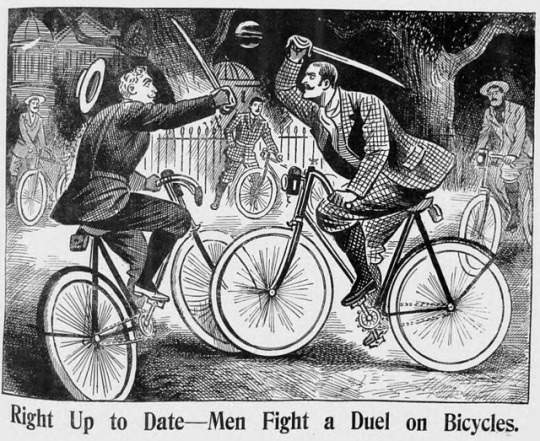
Illustrated Police News, England, August 22, 1896
Image © The British Library Board. All Rights Reserved
6K notes
·
View notes
Photo

The News Journal, Wilmington, Delaware, May 31, 1895
16K notes
·
View notes
Text
tips for writing in the Victorian era, bc it’s a personal favorite, part 1 of…. honestly, who knows how many???
Keep reading
85 notes
·
View notes
Text
Batch Request: Victorian Era Kids
“All I want to do is go outside, not read. However, if that’s what it takes to get out there, I suppose I can carry the book with me.”
“Why must I be here when my toys call out to me?”
“I was hoping I could hide here until they give up. I don’t want to study.”
“No amount of sneaking out will save me from the nightmare of cleaning my room.”
“Chores? Do I have to? I want to go see the horses first.”
“I think I like music, but I’m not sure I’d want to play it myself.”
“I know these streets like the back of my hand. If you don’t want to get lost, come with me.”
“It was hard to get, but this is for you. It’s an old music box. That way, you’ll always remember me.”
136 notes
·
View notes
Text
There’s something more to just the look of the early 1900′s portrait photographs of people. The ghostly blank stare as the camera takes their shot. What were they really thinking? In every photograph they stare into the faint unknown. It’s like they’re trying to give us a warning or tell us a tragic story. The black and white vintage marks beak their melancholy eyes. Ghosts before they were even dead.
472 notes
·
View notes
Note
How would i write about the life of a noble family in 1870's london? Like what are the names of clothing and what food they ate what names of shoes were and etc
Hiya! Whatever it is you’re writing, you’ve chosen an excellent time period to set it in. Here are some things I’ve managed to pick up:
Clothing
Here is a site of Victorian era fashion sorted into decades
Here is another site of women’s dresses in 1870
Here is, you guessed it, a site of mens’ clothing between 1870-1890
Food
This is an excellent source of new food, techniques, and cooking inventions for the era
More types of food eaten in the Victorian period and when
These are some of the foods and habits of 1870s mealtimes
Other
Here is a site explaining how the Victorian aristocracy worked and lived
I hope these helped. Good luck with your story!
- Mod Jazz
If you need advice on general writing or fanfiction, you should maybe ask us!
712 notes
·
View notes
Text
Blindness is a symptom, not a condition.
So I have a rant.
I’ve noticed, with a lot of blind fictional characters, the writers just say they were ‘blind from birth’ which is such a copout. It’s like saying that your nose is running. No reason given- could be allergies, could be a cold, could be that you ate something super spicy.
Eye conditions that cause blindness and visual impairment (only something like 8 percent of legally blind people are completely blind) are varied and they have different effects and other symptoms. Not everyone who is blind ‘looks blind’ or has the clouded cornea that traditionally signals that a character is blind. The problem can be in the front of the eye, but it can also be in the optic nerves or the brain.
Your character could have Albinism, Optic Nerve Hypoplasia, Retinopathy of Prematurity , Cataracts, Corneal Disease, Glaucoma, Diabetic Retinopathy, Macular degeneration, a detached retina, I’m sure I’m missing some. Each of these things affects the eye differently, and come with other symptoms.
Blind representation is so important, but so is doing some research as to why. This isn’t just a problem with OCs or fanfiction, this is a problem I see with canon blind characters and it’s so frustrating.
1K notes
·
View notes
Text
Interesting tips for playing a blind character!
Hey there, guys!
I’ve noticed that blind characters are actually pretty popular. I’ve just spent an hour or more watching videos made by this wonderful person named Tommy Edison (youtube channel TommyEdisonXP), where he answers questions about exactly what it’s like to be blind. I thought I’d share a few tips with you guys if you wanted to make an accurate blind character! I found these videos incredibly interesting and they answered a lot of questions I had thought about before. Hopefully they’ll do the same for you.
Do blind people dream?
They do, like everyone else, but they dream of things that they have experienced– Sounds, tastes, smells, and what they have felt. They can also be just as weird as people who have sight can dream.
So, if you’re making a blind character, and trying to describe a dream they are having through RP, focus a lot on describing the smells, sounds, and feelings of your dream.
What do blind people “see?”
Nothing. They have no perception of color, so when asked “do you just see blackness”, they have no idea. However, what they can perceive is light and dark. They can sense the light changing in a room, for instance. They can tell if it’s day or night by the lighting.If you’re roleplaying as a blind character, instead of saying “all they could see is black” or something along those lines, perhaps focus on describing the type of light they’re sensing around them.
Another interesting tip that I learned from Tommy’s videos is that not many blind people open their eyes constantly, because they have no need to use the muscles needed to do so. They will mostly have their eyes lightly closed or very barely half open.
How do blind people know what an object is?
They use their other senses– Touch, taste, smell. If you’re playing a blind character, you might be able to “smell a wolf in front of you,” and decide upon that if you know that particular character or not. Tommy focused a lot on the uniqueness of sounds of other peoples’ voices, and how he could tell who it was by that, as well.
I hope I didn’t sound pretentious by making this as a sighted person! Definitely not my intention if I did, and I apologize. I’m just hoping to help out those of you who play blind characters, and how to more accurately represent them.
184 notes
·
View notes
Text
Interesting tips for playing a blind character!
Hey there, guys!
I’ve noticed that blind characters are actually pretty popular. I’ve just spent an hour or more watching videos made by this wonderful person named Tommy Edison (youtube channel TommyEdisonXP), where he answers questions about exactly what it’s like to be blind. I thought I’d share a few tips with you guys if you wanted to make an accurate blind character! I found these videos incredibly interesting and they answered a lot of questions I had thought about before. Hopefully they’ll do the same for you.
Do blind people dream?
They do, like everyone else, but they dream of things that they have experienced– Sounds, tastes, smells, and what they have felt. They can also be just as weird as people who have sight can dream.
So, if you’re making a blind character, and trying to describe a dream they are having through RP, focus a lot on describing the smells, sounds, and feelings of your dream.
What do blind people “see?”
Nothing. They have no perception of color, so when asked “do you just see blackness”, they have no idea. However, what they can perceive is light and dark. They can sense the light changing in a room, for instance. They can tell if it’s day or night by the lighting.If you’re roleplaying as a blind character, instead of saying “all they could see is black” or something along those lines, perhaps focus on describing the type of light they’re sensing around them.
Another interesting tip that I learned from Tommy’s videos is that not many blind people open their eyes constantly, because they have no need to use the muscles needed to do so. They will mostly have their eyes lightly closed or very barely half open.
How do blind people know what an object is?
They use their other senses– Touch, taste, smell. If you’re playing a blind character, you might be able to “smell a wolf in front of you,” and decide upon that if you know that particular character or not. Tommy focused a lot on the uniqueness of sounds of other peoples’ voices, and how he could tell who it was by that, as well.
I hope I didn’t sound pretentious by making this as a sighted person! Definitely not my intention if I did, and I apologize. I’m just hoping to help out those of you who play blind characters, and how to more accurately represent them.
184 notes
·
View notes
